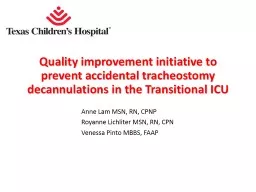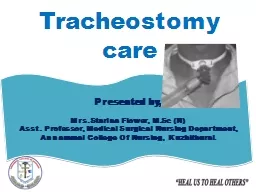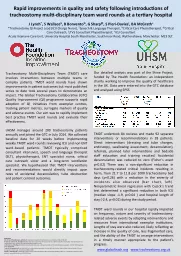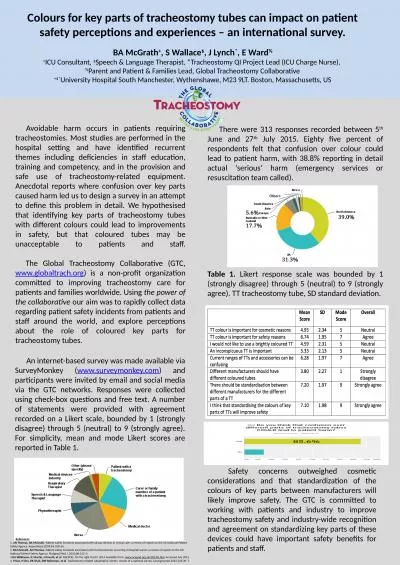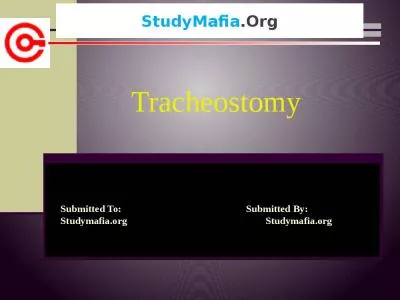PPT-Quality improvement initiative to prevent accidental tracheostomy
Author : olivia-moreira | Published Date : 2019-12-02
Quality improvement initiative to prevent accidental tracheostomy decannulations in the Transitional ICU 2019 4 th Annual TCH Professional Day Anne Lam MSN RN CPNP
Presentation Embed Code
Download Presentation
Download Presentation The PPT/PDF document "Quality improvement initiative to preven..." is the property of its rightful owner. Permission is granted to download and print the materials on this website for personal, non-commercial use only, and to display it on your personal computer provided you do not modify the materials and that you retain all copyright notices contained in the materials. By downloading content from our website, you accept the terms of this agreement.
Quality improvement initiative to prevent accidental tracheostomy: Transcript
Download Rules Of Document
"Quality improvement initiative to prevent accidental tracheostomy"The content belongs to its owner. You may download and print it for personal use, without modification, and keep all copyright notices. By downloading, you agree to these terms.
Related Documents

